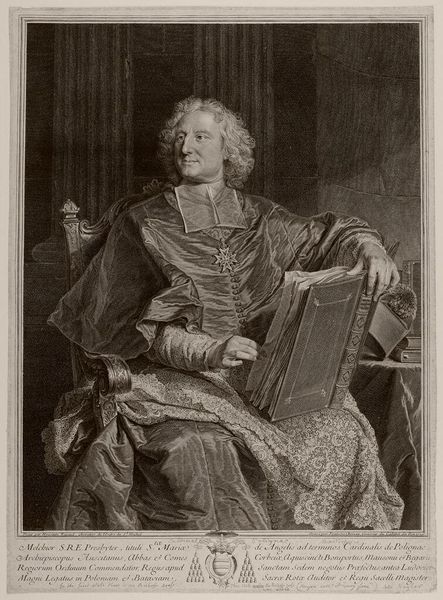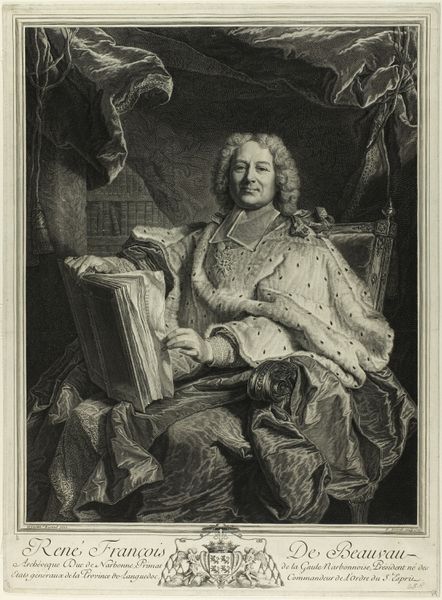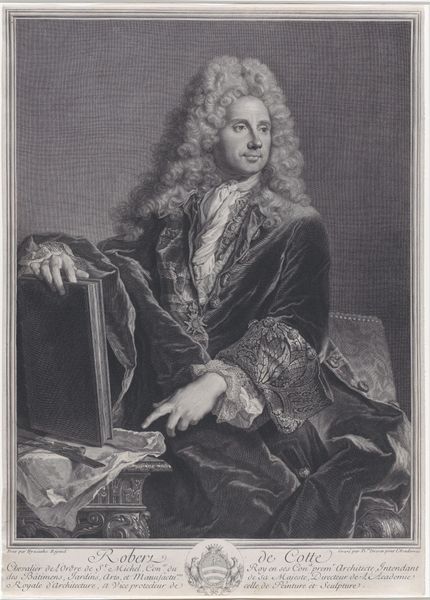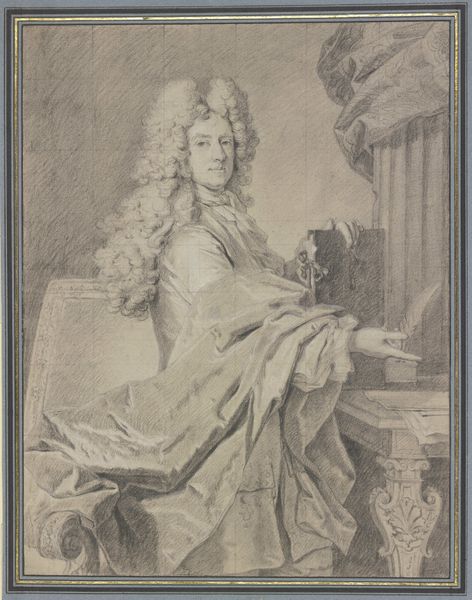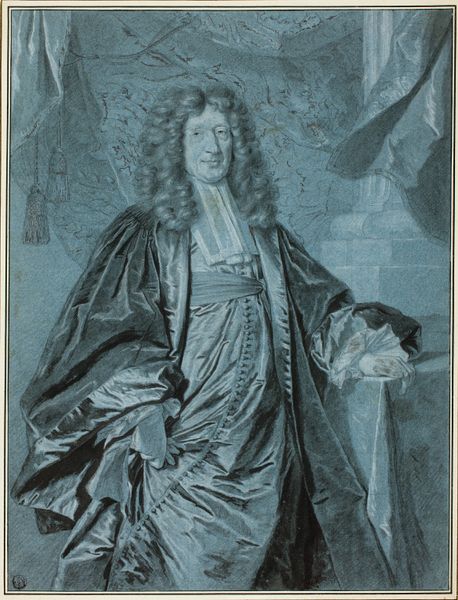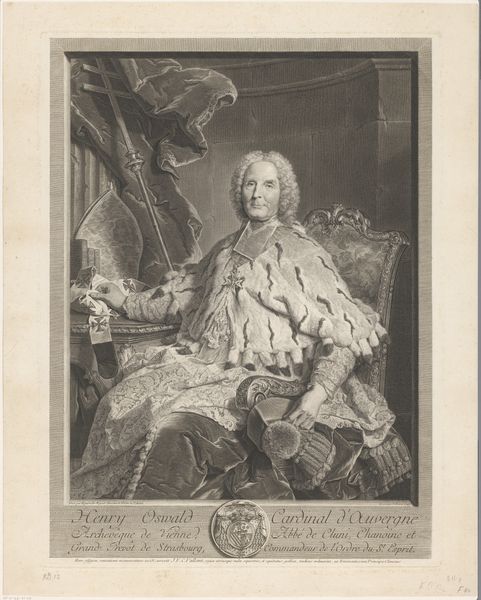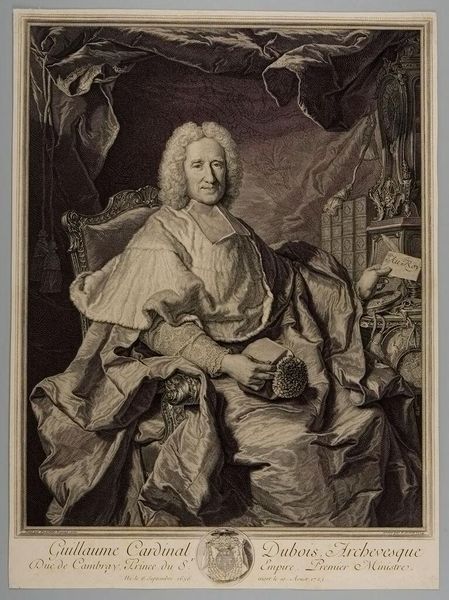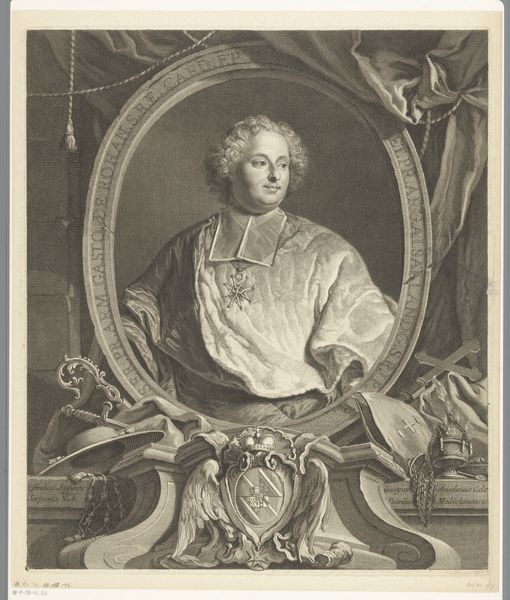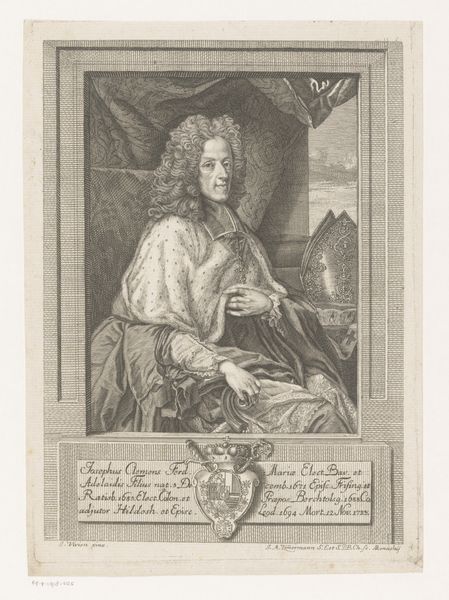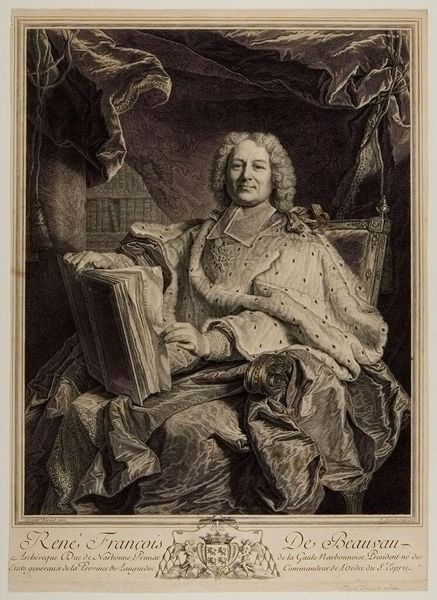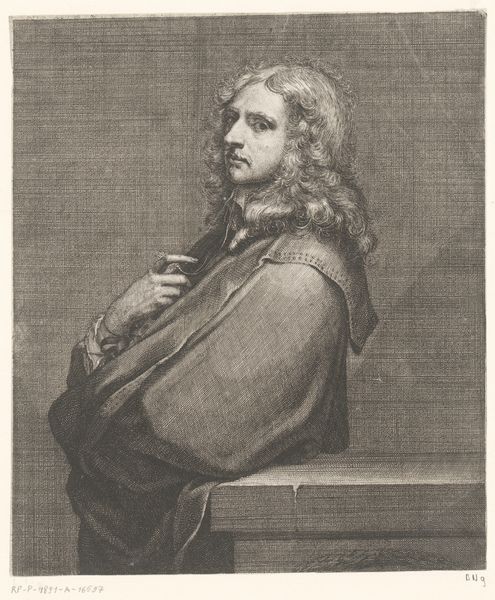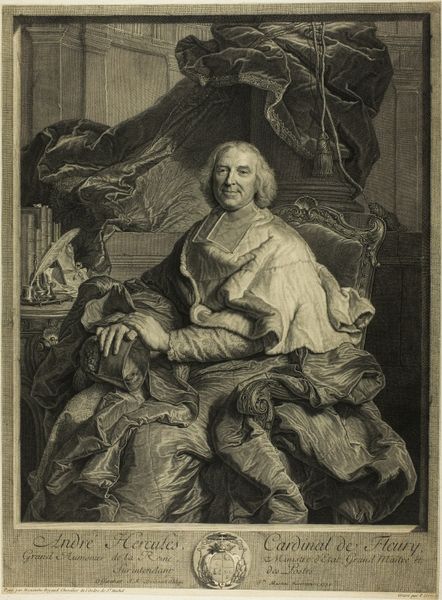
drawing, print, paper, engraving
#
portrait
#
drawing
#
baroque
# print
#
paper
#
france
#
history-painting
#
engraving
Dimensions: 471 × 339 mm (image); 476 × 345 mm (sheet, cut within platemark)
Copyright: Public Domain
Curator: Look at the intricacy of line in this print, Portrait of Cardinal de Polignac, created in 1729 by François Chereau, the elder. You can find it at the Art Institute of Chicago. What strikes you first? Editor: All that fabric! The opulence is palpable; the textures depicted feel heavy, almost overwhelming. I'm thinking velvet, silk, and intricate lace – it's all about surface. Curator: The subject, Cardinal de Polignac, held significant political and religious power in France. Understanding his role within the French court is vital for a full appreciation of this image. His elaborate garments and accessories speak to his elite status. It’s important to acknowledge that class distinctions played a crucial role in who got to be represented in such a permanent medium. Editor: Precisely. Engraving, the medium itself, is fascinating here. Each line is a deliberate mark, an exercise in controlled labor meant to create copies. Was this portrait commissioned, do you think? To spread and multiply his image? Curator: Very likely. It’s a visualization of power dynamics but consider how printmaking at the time allowed for dissemination of images to a wider audience than traditional painted portraits would have allowed. This availability opens avenues for critical reinterpretation. Editor: And how that accessibility plays out socially is key. Beyond his status, the work itself suggests an engagement with luxury and power, particularly visible in the meticulous recreation of textures in this reproducible medium. You see a careful orchestration of production geared toward projecting authority. Curator: This print certainly offers insight into the performance of identity within the Church during the Baroque era. The Cardinal, a symbol of hierarchical power within both the church and state is being carefully constructed as an image. How would this portrait serve his identity at the time, and potentially in the future? Editor: Looking closely, you realize it is essentially ink on paper, made through manual skill and ingenuity to elevate someone's position. Considering it as an object really draws attention to how authority is built, material by material. Curator: Analyzing the Cardinal through an intersectional lens of religious and political identity really illuminates his position in history. Editor: Right, but understanding the labor of its making really anchors our interpretation.
Comments
No comments
Be the first to comment and join the conversation on the ultimate creative platform.
